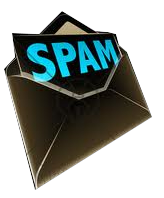Any email marketing partner who promises 100% of your emails will hit the recipient's inbox aren't just misinformed - they're lying. The truth is, there's simply no guarantee of a foolproof method to dodge every spam filter or customized filter established by every potential recipient.
That said, there
are some ways to improve the chances your emails hit those hard-sought targets.
8 ways JangoMail
gets your emails to the inbox
1. Separate yourself from the pack.
Use a branded "From" address rather than your complimentary
username@jangomail.com "From" address. Ex.s:
john.smith@company.com or
john.smith@newsletters.company.com. Using your own domain, or creating a subdomain of your own carries your branding consistently throughout the message. Also, a key benefit is that each address can have its own SPF and DKIM records. These are "reverse lookups" that tell the receiving server that we have permission to send on behalf of your domain(s). There's also a SMTP level benefit, in that a branded sub-domain allows the SMTP MAIL FROM command during the SMTP transaction between our sender and the recipient server to show your sub-domain rathern than jangomail.com.
Details
2. Keep track of yourself.
By default, every JangoMail account is assigned a system tracking domain that's shared among multiple clients (ex. x.jango5.com). By setting up a branded tracking domain based upon your organization's domain name, you can isolate yourself from the activities of other clients. To set this up, just go to
Settings > Tracking > Tracking Domain.
Details
3. "Up" your trustworthiness.
Setup DKIM for the domain use in your "From Address".
Yahoo! Mail and Gmail look for DKIM signatures in the headers of incoming email messages, considering them confirmation that the email was sent by who was purported to send it. In other words, consider it a sign of trust.
Details
4. Clear the path for complaints.
After creating a DKIM record, click the link in the confirmation email from Yahoo to postmaster@yourdomain. Here's some background: When you create a DKIM record, Yahoo sends this confirmation email that includes the link to activate a "Feedback Loop". That loop is where Yahoo processes any complaints, and communicates those back to JangoMail. If you don't click the link to activate, complaints won't be properly reported and delivery to Yahoo will be negatively impacted - specifically folks looking for your unsubscribe list.
5. Stay master of your domain.
Setup SPF records on your domain, and then set your email campaigns to use your own "From Address" as the SMTP-level MAIL-FROM address.
Details
6. Send backup - plain and simple.
If you're sending HTML email, always include a corresponding plain text message. Spam filters can still get hung up on heavily-coded emails, even though they've proven more effective in communicating a customized message to and eliciting ROI from email recipients. To ensure greater delivery success, simply set your plain text messages to "auto-generate", which triggers plain text to be generated (base don your HTML message) at the time of email sending.
Details
7. Get certified in success.
Enroll in the Return Path Safe List program if you have a complaint rate of 0-0.1%. Once enrolled, your emails are sent from safe-listed IP addresses. Yahoo, as a primary example, prioritizes emails sent from listed IPs.
Details
8. Anchor yourself in phrases only.
If you use click-tracking, you'll want to submit anchor text in phrases - not URLs. Spam filters can consider URL anchors as fraudulent and indicative of a phishing scam.
Good click-tracked link:
<a href="http://www.browniekitchen.com/">Visit our web site.</a>
Bad click-tracked link:
<a href="http://www.browniekitchen.com/">http://www.browniekitchen.com</a>
Here's what success looks like
Successful email campaign open rates are in the range of 15-35%. Take into consideration that some of your opens may not register if recipients have to 'view images'. But, if your rate is even higher than this, it's definitely reason to celebrate.
And if you're seeing lots of response to your behavioral goals (i.e. "click on this to get this deal/offer/information") then you also get a seat in the VIP section at Club Jango.
Already a rock star?
If you've had some amazing results from email campaigns and want to share them,
tell us. We love to hear and share new tips to enhance email communications. Who knows? What you tell us today could be the next, new JangoMail feature we unleash tomorrow.
As always,
give us a shout with any questions or comments. Until then, we leave you with a blast from the past commercial. We hope you've never met ANYONE like this:



















